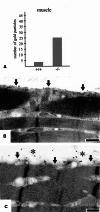Basement membrane components are key players in specialized extracellular matrices
- PMID: 20428923
- PMCID: PMC2921489
- DOI: 10.1007/s00018-010-0367-x
Basement membrane components are key players in specialized extracellular matrices
Abstract
More than three decades ago, basement membranes (BMs) were described as membrane-like structures capable of isolating a cell from and connecting a cell to its environment. Since this time, it has been revealed that BMs are specialized extracellular matrices (sECMs) with unique components that support important functions including differentiation, proliferation, migration, and chemotaxis of cells during development. The composition of these sECM is as unique as the tissues to which they are localized, opening the possibility that such matrices can fulfill distinct functions. Changes in BM composition play significant roles in facilitating the development of various diseases. Furthermore, tissues have to provide sECM for their stem cells during development and for their adult life. Here, we briefly review the latest research on these unique sECM and their components with a special emphasis on embryonic and adult stem cells and their niches.
Figures






References
-
- Ross RS. Molecular and mechanical synergy: cross-talk between integrins and growth factor receptors. Cardiovasc Res. 2004;63:381–390. - PubMed
-
- Geiger B, Spatz JP, Bershadsky AD. Environmental sensing through focal adhesions. Nat Rev Mol Cell Biol. 2009;10:21–33. - PubMed
-
- Timpl R, Brown JC. Supramolecular assembly of basement membranes. Bioessays. 1996;18:123–132. - PubMed
Publication types
MeSH terms
Substances
LinkOut - more resources
Full Text Sources
Other Literature Sources
Medical

